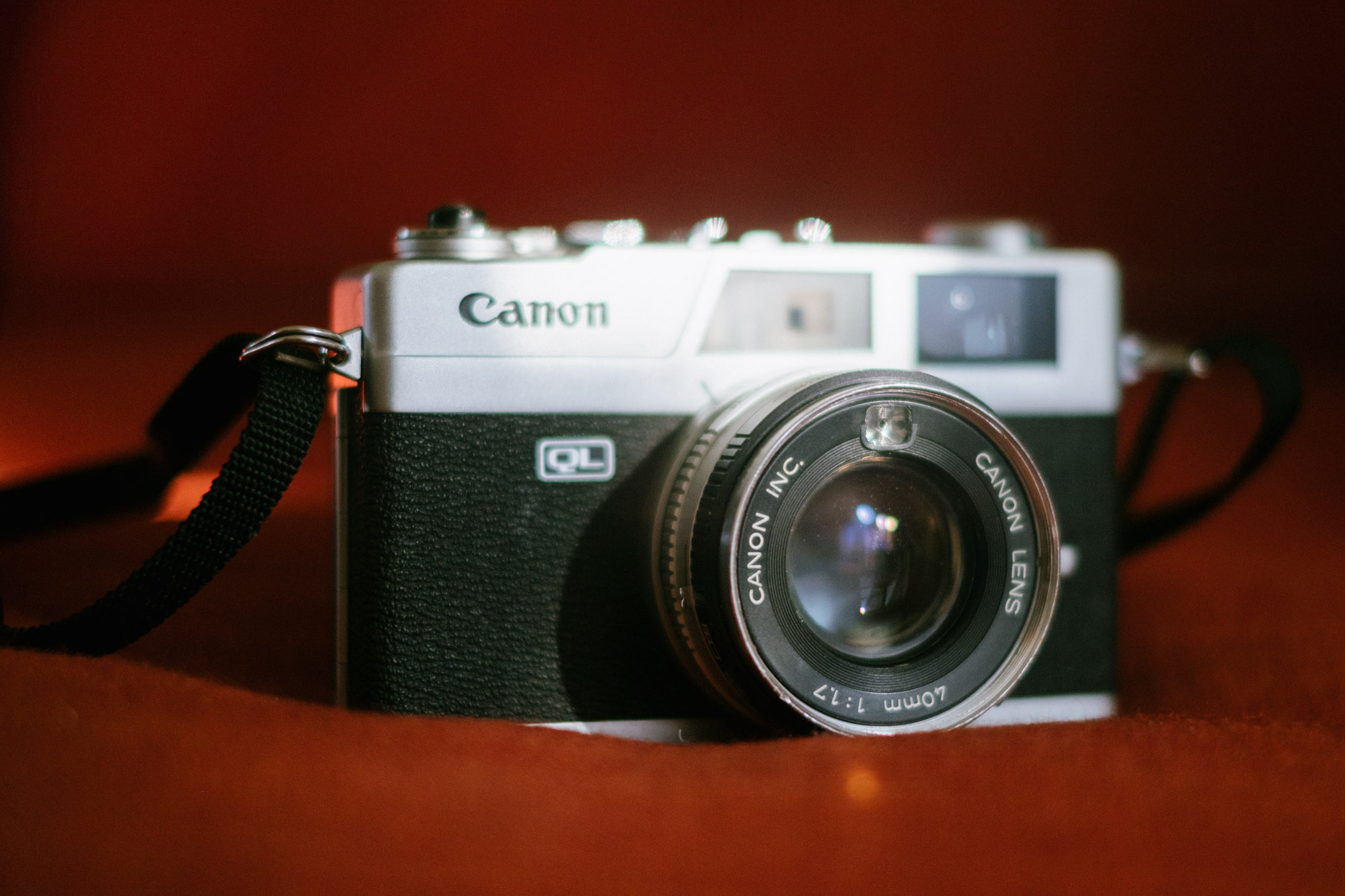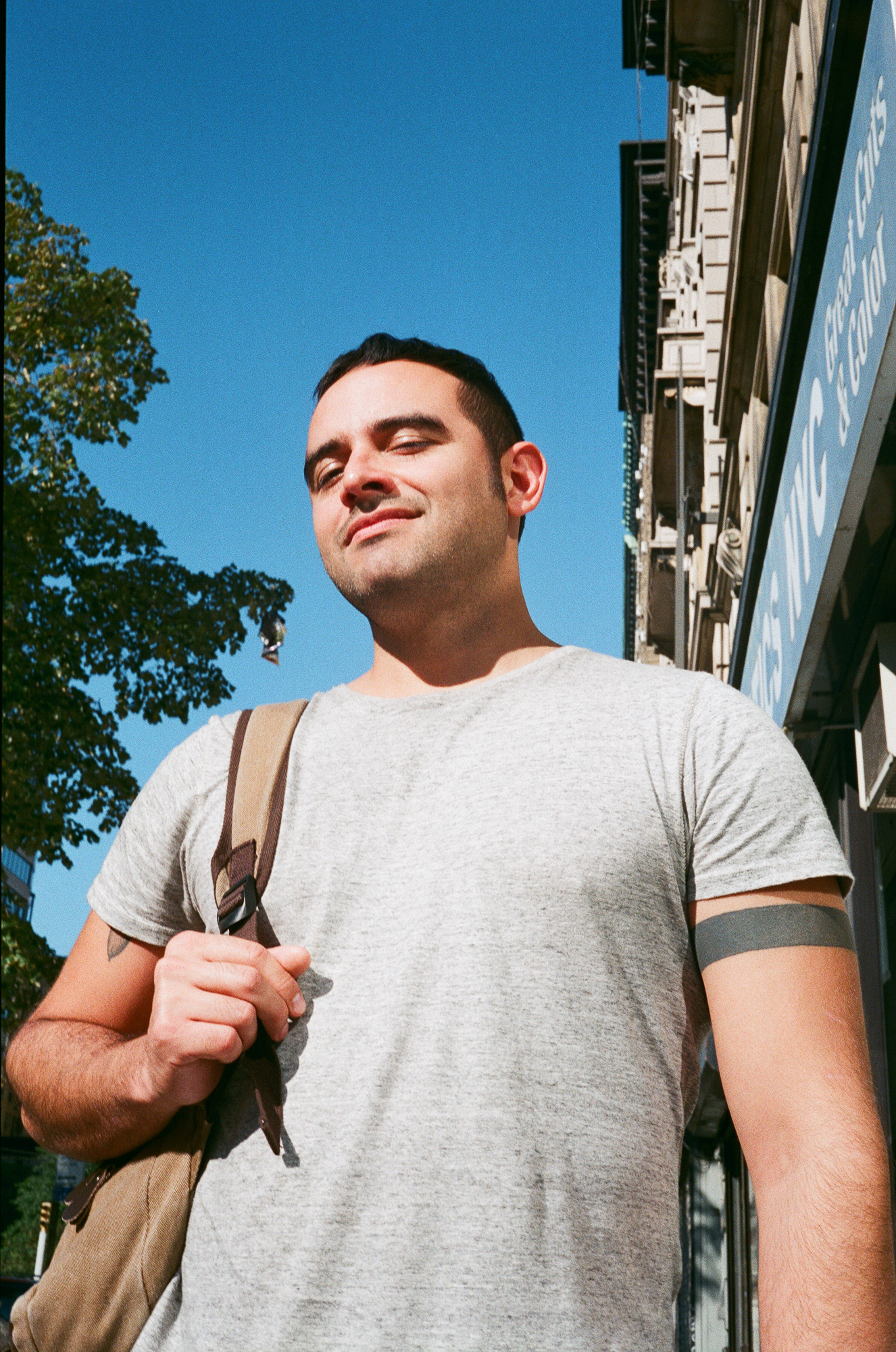Canonet QL17 Film Camera Review: A Triumph of Design
The Canonet QL17 is one criminally underrated film rangefinder.
Photographers often talk about the "joy" of shooting film: supposedly a more tactile, physical, intimate way of creating photographs. To be honest, I thought it was all a bit pretentious... until I shot with the Canon QL17.
The Canonet QL 17. Fuji X-Pro1, Fujinon 35mm f/1.4.
You may be skeptical, and understandably so. This camera was manufactured in the 1970s... unless you're a lo-fi fanatic, could it really be worth using in 2018?
The short answer is: yes. We're acclimated to planned obsolescence in our modern day cameras, with new models outpacing their predecessors every two years. Film camera technology is a bit different. A full manual rangefinder from the 70s can hold up better than the many modern offerings – and the proof is in the pudding with the Canonet QL17.
Technical Specs of the Canonet QL17
- Type: Rangefinder camera
- Manufacturer: Canon Inc. Japan
- Lens: Canon Lens 40mm f/1.7. 6-element 4-group construction, with four newly designed glasses. Spectra coated in amber and purple. Filter thread 48mm.
- Shutter: Between-the-lens type. Shutter speeds from 1/4 to 1/500 sec. and B. Automatically sets aperture, self-cocking combined film/shutter wind, self-timer, X-synchronization.
- Viewfinder: Bright-Line type, Parallax Correction Mark
- Rangefinder: Viewfinder combined with range-finder, bright frame with automatic parallax correction, aperture scale, exposure indicator, over/under exposure indicator, and over/under warning marks.
- EE Mechanism: Built in exposure meter with CdS cell for fully automatic exposure control. Shutter speed priority system. ASA 25-800 (DIN 15-30). With ASA 100 film, EV 3.5 (f/1.7 at 1/4 sec.) EV 17 (f/16 at 1/500 sec.)
- Battery: Originally powered by one 1.35V M20 (#625) mercury battery. Battery checker built-in. (It's possible to use alternatives. *see above)
- Flash: Hot shoe Accessory shoe with direct contact exclusive for Canolite D and the flash socket for the other flash units. Electronic Flash Sync with All Shutter Speeds.
- Weight: 620g
The fixed lens is a 40mm f/1.7 – notably one of the fastest rangefinders available, which is what caught my eye in the first place when hunting for a new film camera. Film images shot in low light are a special kind of magic, but most of the fixed f/2.8 or f/3.5 cameras (like my beloved Yashica T2 – in many regards, the exact opposite of the Canonet QL 17) struggle to nail those shots.
The lens features gorgeous color rendering with superb contrast: see for yourself.
A couple along the Hudson river. Canonet QL17, Fuji Superia X-Tra 400.
Focusing the Canonet QL17 Film Rangefinder
The moment I figured out the focusing mechanism on the Canon QL17, I yelled out loud, "Why aren't the Fuji mirrorless rangefinders built like this?". Using your thumb to move a tactile lever around the lens, you'll notice a 'ghost' of your composition in the center of the frame that comes in to focus only when your focus is dead-on.
It sounds a bit clunky, but it's a true joy to use – and after some trial and error, faster than digital autofocus in many cases!
Tennis along the Hudson river. Canonet QL17, Fuji Superia X-Tra 400.
The Canonet QL17 Film Rangefinder's Battery Problem
Being a vintage camera from the 1970s, the QL17 has the macabre issue of being built to run on mercury-based batteries. Of course, we now recognize the dangers of mercury and no longer produce these batteries.
So is the internal light meter doomed to never work again? Not quite.
You can substitute the mercury batteries for modern watch batteries like the Duracell 625A. Reports vary on how precise the light meter reads when using non-mercury batteries, but it could be a useful gut check if you're not confident eyeballing exposure.
Loading film on the Canonet QL17 Film Rangefinder
QL stands for "quick load", referencing the pioneering mechanism that loads and advances the film. Simply slap your roll in the film bay, pull it out to the orange marking and line it up with the white cogs on the rotating pulley, close the back of the camera, and crank the film advancing lever. You'll notice the flashing red and white strips vibrating on the small window on the back to indicate that your film is indeed advancing.
At the time, this was top-tier innovation – and the mechanism holds up very well against modern day film cameras.
Shooting Portraits with the Canonet QL17
The 40mm f/1.7 focal length is ideal for portraiture with minimal distortion. Not to mention the logistics of shooting portraits with such a tiny body: the diminutive size of the Canonet QL17 puts subjects at ease. Try that with a bulky DSLR!
Fernando on Broadway in Harlem. Canonet QL17, Fuji Superia X-Tra 400.
Allison in the park. Canonet QL17, Fuji Superia X-Tra 400.
Declan relaxing at home. Canonet QL17, Kodak Gold 200.
It's worth noting that the small body is deceptively heavy... but not enough to break your back. Even so, the photographer I got mine from on Craigslist sold it to me because it was too heavy for his girlfriend to carry around comfortably... so don't say I didn't warn you!
Street Photography with the Canonet QL17
So how does the focal length and form factor hold up for street photography? In the same way that portraits benefit from the 'stealth' aspect, street photography is anxiety-free. The focal length straddles a perfect in-between of intimate and contextual, and people tend to be innately put at ease when they spot a film camera versus a digital camera.
A child playing in the mist fountains on Christopher Street Pier. Canonet QL17, Fuji Superia X-tra 400.
A woman on Christopher Street pier. Canonet QL 17, Fuji Superia X-Tra 400.
A curious puppy in Washington Heights. Canonet QL17, Kodak Gold 200.
172nd and Haven Avenue in Washington Heights. Canonet QL17, Kodak Gold 200.
Ironically, the Canonet QL17 shines brightest in low light situations. When opening your lens to f/1.7, your centers will be tack-sharp, and the bokeh and fall off are dreamy and milky. It's a gorgeously cinematic look, and the subject separation is simply unreal.
Your depth of field at f/1.7 will be razor thin, so it's best not to focus and recompose when wide open – when possible, keep your compositions with the focus in the center of the frame.
Eliza posing. Canonet QL17, Kodak Gold 200.
Essential Accessories for the Canonet QL 17
You'll need to grab a battery if you want to jerry-rig the internal light meter to work. Otherwise, feel free to shoot fully mechanically. You can either eyeball the exposure or pick up a light meter, depending on your experience and caution level. The film selection below will give you the greatest range of versatility and quality for all shooting conditions with a large latitude – perfect for a shaky light meter or eyeballing your exposure.
- Kodak Porta 400 (5 Rolls) – $44.15
- Fuji Superia X-Tra 400 (10 Rolls) – $45.00
- Kodak Gold 200 (3 Rolls) – $12.69
- B&W Film (10 Rolls) – $58.99
- Battery – $7.99
- Light Meter – $31.79
The view from my bedroom window in the morning. Canonet QL17, Kodak Gold 200.
Lincoln Center fountains. Canonet QL17, Fuji Superia X-tra 400.
Where to Buy the Canonet QL 17
When hunting for vintage camera bodies, your best bet is usually Craigslist, Ebay, and Amazon. Be sure to shop around for the best possible price – it should run you between $100 and $150 for a body in decent condition.
Central Park runners and carriage. Canonet QL17, Kodak Gold 200.


















